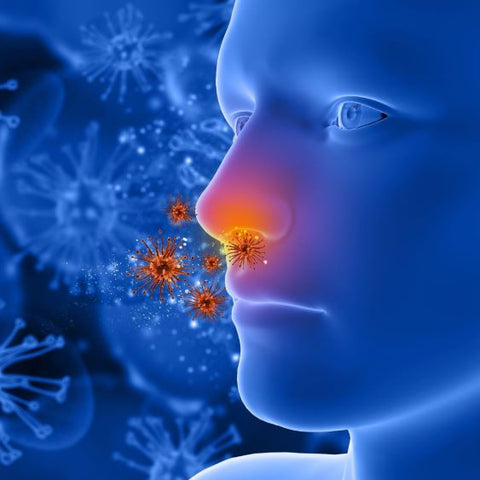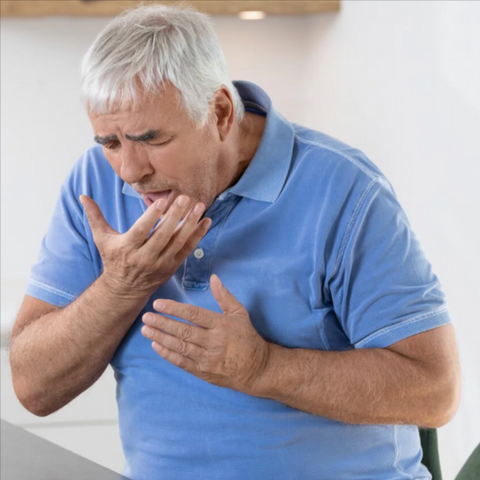
SPOTLIGHT ON BRONCHIECTASIS
Recognising the telltale symptoms of bronchiectasis
Do you often have a stubborn cough, shortness of breath, or keep getting sick with chest infections? If so, you might have a condition called bronchiectasis. It's important to recognize the early signs of this lung problem so you can get help from a doctor.
What is Bronchiectasis?
Bronchiectasis is a chronic condition where the airways get abnormally wide and scarred (‘chronic’ in this sense means long-lasting and getting worse over time). It affects mostly the bronchi, which are the main passageways into the lungs. This abnormal widening happens because of repeated inflammation and infection, leading to damage and weakening of the walls of the bronchi. As a result, excessive mucus collects within these widened airways, making it easier to get respiratory infections.
What causes bronchiectasis?
Bronchiectasis can be found in patients as a result of chronic lung diseases, such as cystic fibrosis (CF), primary ciliary dyskinesia (PCD) or chronic obstructive pulmonary disease (COPD). It can also be found in adults that had a severe lung infection in childhood, such as pneumonia. However, in many cases the cause is unknown. This is called “idiopathic bronchiectasis”.Other causes can be found on the NHS website
Understanding the Symptoms
The symptoms of bronchiectasis can vary from person to person and often depend on the severity of the condition. Common signs and symptoms include:
- Chronic cough: A cough that won’t go away, often with lots of mucus or phlegm.
- Shortness of breath: As the condition progresses, difficulty in breathing, especially when physically active, may become more noticeable.
- Chest pain: Some may experience chest discomfort or pain, particularly when coughing (always see a healthcare professional if you have chest pain).
- Fatigue: Feeling tired all the time.
- Frequent respiratory infections: More prone to developing frequent chest infections.
Diagnosis and Treatment
Diagnosing bronchiectasis typically involves a combination of medical history assessment, physical examination, and diagnostic tests. Tests may include:
- Imaging studies: Chest X-rays or CT scans can provide detailed images of the lungs.
- Sputum culture: Analysing a sample of mucus coughed up from the lungs can help identify any infections.
- Pulmonary function tests: These tests measure lung function and help assess lung damage.
Once diagnosed, treatment focuses on controlling symptoms, preventing complications, and improving overall quality of life. You should always ask your healthcare professional before starting any new treatment, but options include the following:
- Airway clearance techniques (ACT): Various techniques, such as chest physiotherapy and the use of devices like an oscillating positive expiratory pressure (O-PEP) device, can help loosen and remove mucus from the airways.
- Medications: Bronchodilators may be prescribed to help open the airways and improve airflow. Antibiotics (tablets or nebulised antibiotics) are often used to treat respiratory infections. When nebulising antibiotics it’s a good idea to use an efficient nebuliser (such as the PARI BOY Classic) with a filter to prevent exhaled aerosol escaping into the surrounding air. Mucolytic medications or nebulised hypertonic saline can help thin and loosen mucus, making it easier to cough up.
- Pulmonary rehabilitation: Your healthcare professional may recommend this program to help with exercising, breathing exercises and managing your health. More information can be found here
- Surgery: In very severe cases e.g. where bronchiectasis affects only one part of the lung, or when complications such as severe coughing up of blood occur, a part of the lung may be removed, but this is rare.
Conclusion
Bronchiectasis can significantly impact a person’s quality of life if left untreated. However, with early diagnosis and the right care, the symptoms of bronchiectasis can be managed to help you live a healthier, more fulfilling life. If you have COPD and have frequent chest infections, it may be worth asking your healthcare professional to check if you have bronchiectasis.
You may also be interested in our blog How to clear mucus on your chest






